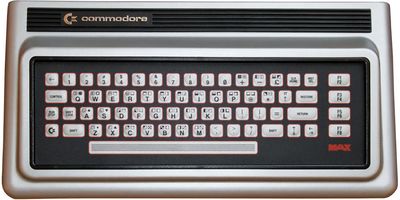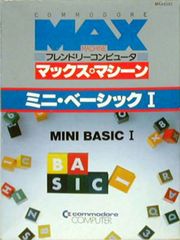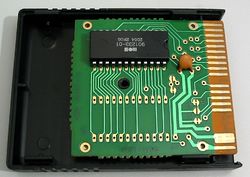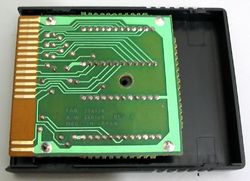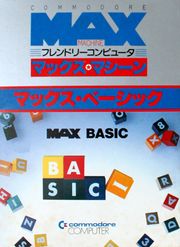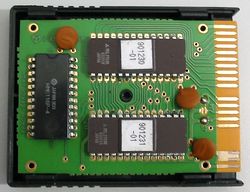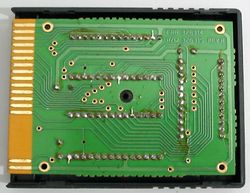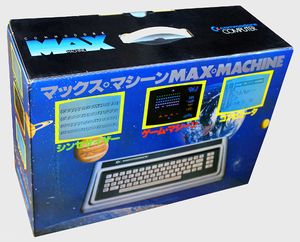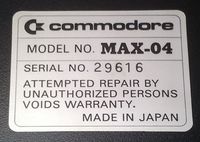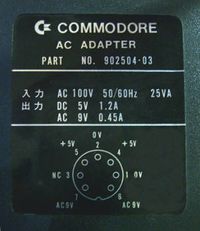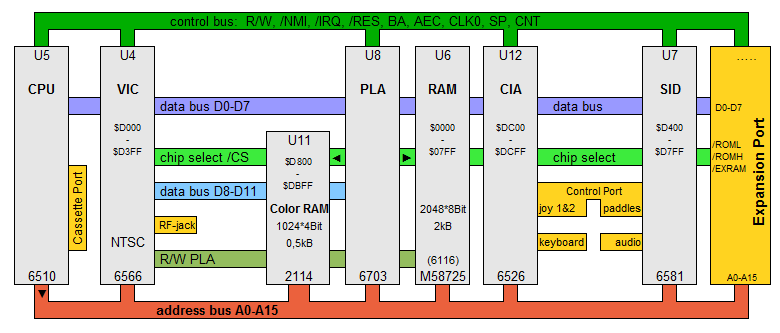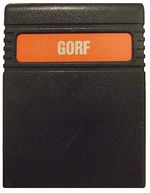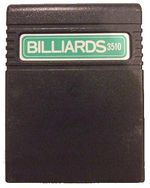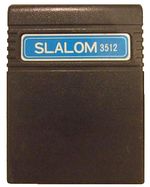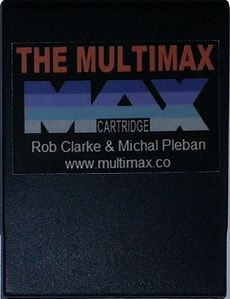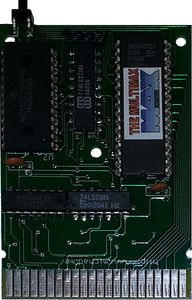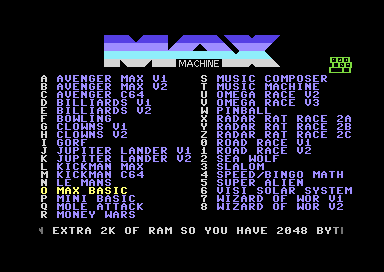Commodore MAX Machine
| Commodore MAX Machine | |
| Type: | Home Computer |
| Producer: | Commodore |
| Price: | JP: ¥34,800, DE: 498 DM, (ca. 250 €) US: $200 (ca. $560) |
| Released: | 1982 |
| Discontinued: | 1982 |
| Processor: | MOS 6510 @ ca. 1 MHz |
| Memory: | 2.5 KByte |
| OS: | Only with cartridge Mini BASIC I or BASIC V2.0 |
| Info: | alias Ultimax (USA) or VC10 (Germany) |
The Commodore MAX Machine was released in 1982 and was only sold in Japan for ¥34,800[1]. The MAX Machine used the same architecture as the C64, but only had 2 kilobytes of RAM compared to the C64's 64 KB and had greatly reduced functionality. About 50,000 units were produced during 1982. In Germany it was called the VC-10 and Ultimax in the US, though it likely never saw a release in either region.
Because of its limited capabilities, and the popularity of the more capable VIC-20, the MAX Machine was quickly discontinued.
Hardware differences with the C64[edit | edit source]
Compared to the Commodore 64, the MAX Machine has a number of hardware differences, including the following:
- Only 2 KB of RAM compared to the C64's 64 KB
- A membrane keyboard instead of a full-travel keyboard
- RF output with mono audio via a 1/8" jack; the C64 has RF output in addition to composite, chroma/luma and mono audio via a DIN connector
- One joystick port on each side of the system; the C64 has both joystick ports on the right-hand side
- Rear-mounted power connector and power switch; the C64 has these on the right-hand side
- No Serial Port, meaning no external devices such as a disk drive or printer
- No User Port
- No ROM is present, meaning a cartridge must be present to provide functionality,
- Access to the datasette is only possible with the "MAX BASIC" cartridge, and the maximum program size is 2 KB
BASIC[edit | edit source]
To use the MAX Machine with an OS like BASIC one must plug in one of these two cartridges:
MINI BASIC I[edit | edit source]
The cartridge MINI BASIC I contains a cut-down BASIC V2 with 510 free bytes.
- The following commands are missing: ATN, CLOSE, CMD, COS, DEF, DIM, EXP, FN, INPUT#, LEFT$, LOAD, LOG, ON, OPEN, PRINT#, RIGHT$, SAVE, SIN, SQR, TAN, USR, VAL, VERIFY and WAIT.
- All error messages (except for INPUT error messages) are displayed as numbered codes. For example, ?SYNTAX ERROR is displayed as ?ERROR2. Because of the cut-down command list, there are only 14 error codes, numbered 1-15 (13 is not used):
Error Code Error 1 ?NEXT WITHOUT FOR 2 ?SYNTAX 3 ?RETURN WITHOUT GOSUB 4 ?OUT OF DATA 5 ?ILLEGAL QUANTITY 6 ?OVERFLOW 7 ?OUT OF MEMORY 8 ?UNDEF'D STATEMENT 9 ?DIVISION BY ZERO 10 ?ILLEGAL DIRECT 11 ?TYPE MISMATCH 12 ?STRING TOO LONG 13 Not used 14 ?FORMULA TOO COMPLEX 15 ?CAN'T CONTINUE
MAX BASIC[edit | edit source]
The MAX BASIC cartridge contains the full BASIC V2 with 2047 free bytes.
Construction[edit | edit source]
Interfaces[edit | edit source]
Most connections are on the rear (from left to right):
- Power on/off switch
- Power connection (7 pin DIN female) for the power supply (4 pin DIN male)
- Audio connection (1/8" jack)
- Expansion Port (44 pin; I/O)
- Channel select (channel 1 or 2)
- RF out (RCA jack)
- Datasette connector (Cassette Port; 12 pin; I/O) for connecting a 1530 or C2N
There is a Control Port on each side of the system.
Mainboard[edit | edit source]
The MAX Machine uses either an Assy 325565 Rev.A or Rev.B board.
- Processor: MOS 6510 with ca. 1 MHz clock
- Memory: 2 KB RAM (M58725P) + 0.5 KB Color RAM
- Graphics: VIC-II (MOS 6566)
- Display in text mode (large letters/graphic symbols or large/small letters) 40 (columns) * 25 (rows) chars or in graphic mode (HiRes) 320*200 pixels in 16 colors, 16 frame colors and 16 background colors (additional 8 sprites (HiRes or Multicolor) in BASIC
- Sound: 6581 SID
- Miscellaneous: One interface chip CIA (MOS 6526) for I/O (Input/Output), PLA 6703
- Operating System: None, must be supplied through cartridge ("MINI BASIC I" or "MAX-BASIC")
Specifications[edit | edit source]
- Dimension: MAX Machine: 350x185x60mm, Box: 445x330x140 mm
- Weight: 1820 g
- Keyboard: Membrane keyboard with 66 keys (QWERTY layout)
- Power supply: 5V DC and 9V AC
- Power consumption: 25W
Ultimax-mode[edit | edit source]
MAX Machine cartridges are compatible with the C64, since the C64 has a MAX Machine compatibility mode. Freezer cartridges for the C64 used this compatibility mode to write their ROM in the address section of the hardware interrupt vectors $FFFA to $FFFF (for normal C64 cartridges, these addresses are not accessible) and so they can freeze a program without crashing the CPU or modifying the RAM content.
Block diagram[edit | edit source]
Memory map[edit | edit source]
| Memory map (hex) | Memory map (decimal) | Standard configuration | Cartridge Mini Basic I | Cartridge Max Basic |
|---|---|---|---|---|
| $E000-$FFFF | 57344-65535 | - | 8KB Kernal/BASIC/Char-ROM | 8KB Kernal/Char-ROM |
| $D000-$DFFF | 53248-57343 | I/O-area | I/O-area | I/O-area |
| $A000-$CFFF | 40960-53247 | - | - | - |
| $8000-$9FFF | 32768-40959 | - | - | 8KB Basic-ROM |
| $1000-$7FFF | 4096-32767 | - | - | - |
| $0800-$0FFF | 2048-4095 | - | - | 2KB RAM (on the cartridge) |
| $0400-$07FF | 1024-2047 | screen RAM | screen RAM | screen RAM |
| $0200-$03FF | 512-1023 | 0.5KB RAM | 0.5KB RAM | RAM (system area) |
| $0000-$01FF | 0-511 | RAM (zeropage, stack) | RAM (zeropage, stack) | RAM (zeropage, stack) |
Note: Green background means free BASIC memory.
Cartridges[edit | edit source]
Most MAX Machine cartridges were published in 1982 and all were only released in Japan. They can be also used on the C64.
| Part No. | Name | ROM-size | ROM-chip | Description |
|---|---|---|---|---|
| 3101 | Mini BASIC I | 8KB | 901233-01 (Kernal+BASIC+Char) | Application |
| 3102 | Max BASIC | 8KB 8KB 2KB |
901231-01 (Kernal+Char) 901230-01 (BASIC) HM6116P-4 (RAM) |
Application |
| 3201 | Music Composer | 8KB | Application | |
| 3401 | Omega Race | 8KB | Game | |
| 3402 | Wizard of Wor | 8KB | Game | |
| 3403 | Kickman | 8KB | 325362-02 | Game |
| 3404 | Gorf | 16KB | Game | |
| 3501 | Avenger | 8KB | 325350-01 | Game |
| 3502 | Jupiter Lander | 8KB | 325351-01 | Game |
| 3503 | Super Alien | 8KB | Game | |
| 3504 | Radar Rat Race | 8KB | 325352-01 | Game |
| 3505 | Road Race | 8KB | Game | |
| 3508 | Mole Attack | 8KB | Game | |
| 3509 | Clowns | 8KB | 325356-01 | Game |
| 3510 | Money Wars | 8KB | 325357-01 | Game |
| 3511 | Bowling | 16KB | Game | |
| 3512 | Slalom | 16KB | Game | |
| 3xxx | Le Mans | 8KB | Game | |
| 3xxx | Billiards | 8KB | Game | |
| 3xxx | Music Machine | 4KB | Application | |
| 3xxx | Pinball Spectacular | 16KB | Game | |
| 3xxx | Sea Wolf | 8KB | Game | |
| 3xxx | Speed/Bingo Math | 8KB | Game / Learning software | |
| 3xxx | Visible Solar System | 8KB | Application |
MultiMAX Cartridge[edit | edit source]
The MultiMAX [2] is a cartridge for the MAX Machine developed by Rob Clarke and Michael Pleban. It was introduced at the Vintage Computing Festival in New Jersey in April 2014. The price of a complete cartridge is US$29.95 [3] plus US$4 for shipping (albeit uninsured), although it is sold out as of December 2020. It is also compatible with the C64 and C128.
The MultiMAX PCB uses a 1 megabyte EPROM (27C801) which contains all published games and applications for the Commodore MAX Machine. A 2 kilobyte RAM chip (6116) is also installed, as it is required for "MAX BASIC". After powering on the computer, a program menu appears where the user can select a program. The cartridge has also a reset button so the user can switch between programs without needing to power cycle the computer.
References[edit | edit source]
- ↑ Commodore MAX Machine commercial https://www.youtube.com/watch?v=v0SsFo2WTRg
- ↑ MultiMAX Cartridge http://www.multimax.co
- ↑ MultiMAX selling price http://www.multimax.co/purchase/
Links[edit | edit source]
| Wikipedia: Commodore MAX Machine |
- MAX/Ultimax at Secret Weapons of Commodore
- Overview of MAX Machine cartridges at c64preservation.com
- MultiMAX cartridge home page
